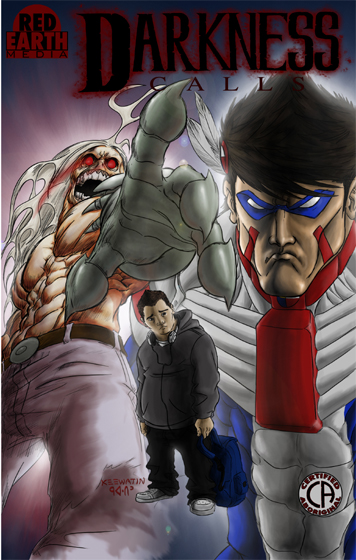- Comics
- Comics Reviews
- Manga
- Comics Reviews
- European Comics
- News
- Comics News
- Press Releases
- Columns
- Spotlight
- Digital Comics
- Webcomics
- Cult Favorite
- Back Issues
- Webcomics
- Movies
- Toys
- Store
- More
- About
By Hervé St-Louis
January 31, 2009 - 14:39
Comic books, for many religious, health and social welfare organizations, have often been seen as an ideal medium to reach a younger audience about targeted messaging. When existing comic book properties are not licensed to deliver the message, communicators often fall back on custom original comic books that can be easily deployed in the youth demographic target area.
A problem affecting many youth as well as adults is suicide. Just like other health and social welfare issues, the comic book has been used to prevent and sensitize suicide in youths in the past. The question about using comic books to combat suicide is whether there is any evidence that they are a successful vehicle to prevent it in youths and possibly other groups.
According to social work professor Richard Ramsay, of the University
of Calgary and the president of LivingWorks Education, a company specialized in
producing suicide prevention material and training, there has been little
projects using comic books in the past, although video games has been
considered as a possible means to communicate to youth about suicide. The deployment of suicide-preventing communications
in video games was deemed expensive, although the idea of creating an interface
to discuss suicide with video games was appealing. However, in 2006, there was a comic book sponsored by health services in the Canadian province of British Columbia released for Canadian First Nations youths called
Darkness Calls.
 |
The Darkness Calls project, created by Vancouver aboriginal animator Steve Sanderson was a single issue comic book aimed at aboriginals youth using mixing Cree heritage and folklore with modern super hero adventure, in a quest to prevent suicide. In the comic book, Cree trickster and hero Wesakechak combats another Cree mythical creature Weetigo, re-imagined as the voice that prompts young aboriginal kids to commit suicide. In the story, the two mythical creatures, updated as modern super heroes and villains, fight for the life of a young Cree boy.
Is using folkloric character updated as modern super heroes and villains is not as effective as just using standard super hero lore to effect suicide prevention? For example, wouldn’t it be more useful to use a marginalized group, like mutants, as defined in current comic book culture and series such as Marvel Comics’ X-Men as a fictional marginalized group that can stand for any minority groups such as young aboriginals or even gays? It seemed to this author that using Cree characters, that it was a top down attitude where Gods walking amongst humans fought for their souls. Mutants, being a group that can stand in for Goths as well as Jews, seemed more appropriate. Professor Ramsay argues that using groups such as mutants as symbols of marginalized groups maintain their marginalized status, although they can promote greater resiliency and help overcome ostracization.
Professor Ramsay adds that group attitudes matter as much because mobilizing against an ostracized group is easy. Attitudes need to change with the peer pressure network and systemic conditions that encourage specific risk groups, like aboriginal and gay youths to commit suicide in the first place. Perhaps, this author thinks, comic books addressing suicide should aim for more than risk groups and start educating people who interact with potential suicide victims.